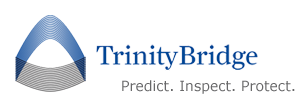Leveraging the Versatility of the API RP 581 Inspection Effectiveness Tables
By Greg Alvarado
API RP 581 provides inspection effectiveness examples for grading historical inspection and planning future inspection to manage risk (see Part 2, Annex C Tables 2.C.3.1 through 2.C.10.4). Tables are provided each damage mechanism and represent inspection strategies that, when executed properly, increase confidence in the true damage state of the equipment in measurable ways. The inspection impacts the calculated damage factor (DF) and probability of failure (PoF) by lowering the amount of uncertainty in the calculation of these two measures. For example, implementing an “A” level inspection strategy for hydrogen induced cracking earns an 80%-100% confidence of finding the damage, if present. A “B” level inspection provides a 60%-80% confidence of finding the damage. These percentages affect the debit that escalates the damage factors and PoF for each mechanism which has a direct impact on the DF and PoF. The effectiveness of an inspection directly affects the calculation of DF and POF by reducing uncertainty of the equipment condition.
Each inspection strategy may consist of more than one inspection technique, provides the amount of inspection coverage required, and identifies the susceptible areas to look for the damage. A unique use of the tables is by factoring in considerations that may not be directly apparent when reading these example tables, for example, NDE operator qualifications. If an NDE operator has not passed a qualification demonstration test for finding cracking in a reactor one could use the tables by lowering the effectiveness of the inspection. If a NDE operator had passed a qualification demonstration test for that mechanism using the proper inspection method with the proper amount of coverage one would achieve an “A” effectiveness credit. However, this operator was not available during the turnaround so a competent, otherwise certified operator did the work. In this case the user may reduce the inspection effectiveness to a “B” level credit, even though the technique for that mechanism and the amount of coverage would have otherwise been an “A”. This is a human factor example.
In a similar manner, the table could be used to take some credit for marginal or qualitative NDE methods used alone or in conjunction with other NDE methods. These methods typically provide little or no quantitative value to the remaining life estimate, such as long range UT and acoustic emission testing. But when added to an equipment strategy that includes methods with more quantitative output such as UT for thickness readings or UT shear wave examinations over a defined area, assigning more inspection credit using these qualitative methods in tandem with others or alone may be justified.
These are just two examples demonstrating value-added use of the inspection effectiveness tables. It is important to be consistent, self-critical and achieve the confidence percentages for each level of effectiveness as defined in API RP 581, 3rd Edition, as shown in Part 2, Annex C.
Please let us know how you are using the tables. Do you adjust or modify them to represent your company’s perspective on effectiveness or do you use them as they are (keep in mind they are only examples)? Do you modify them to include NDE technologies that otherwise prove difficult to assign a quantitative benefit to? Do you modify them to account for human factors? Or other? Thank you for your input in advance.
